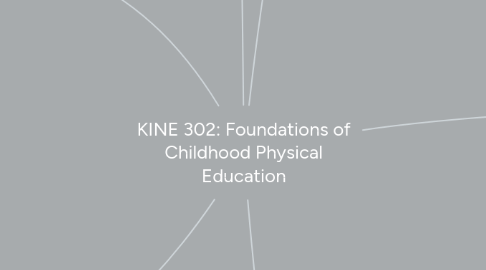
1. ESTABLISHING A LEARNING ENVIRONMENT
1.1. Managerial Component
1.1.1. Protocols, Procedures, Routines
1.1.2. Rules & Expectations
1.1.3. Structure
1.2. Gym Atmosphere
1.3. Instructional Component
1.3.1. Content
1.3.2. Communication
1.3.3. Feedback
2. MOVEMENT CONCEPTS DEVELOPMENT
2.1. Space Awareness
2.1.1. General Space
2.1.2. Self Space
2.1.3. Direction
2.1.4. Location
2.1.5. Levels
2.1.6. Pathways
2.1.7. Extensions in Space
2.2. Effort
2.2.1. Time
2.2.2. Force
2.2.3. Flow
2.3. Relationships
2.3.1. of Body Parts
2.3.2. w/ Objects
2.3.3. w/ People
3. ADAPTING CONTENT FOR DIVERSE LEARNERS
3.1. Diversity to Consider
3.1.1. Overweight Children
3.1.2. Cultural Differences
3.1.3. Gender Equity
3.1.4. Religious Differences
3.1.5. Children of Poverty
3.2. Special Needs
3.2.1. Visual & Hearing Impairments
3.2.2. Physical & Intellectual Disabilities
3.2.3. Learning Disabilities
3.2.4. Health-Related & Behavioral Disorders
3.2.5. Autism Spectrum
3.3. Creating Conditions for Inclusion
3.3.1. Change & Challenge
3.3.2. IEPs (Individualized Education Programs)
3.3.3. Least Restrictive Environment
3.3.4. Ecological Model of Inclusion
4. SKILL THEME APPROACH
4.1. Characteristics
4.1.1. GLSP
4.1.2. Short Units
4.1.3. Locomoter, Manipulative, Nonmanipulative
4.1.4. Instructional Alignment
4.2. Physical Fitness
4.3. Affective Domain
4.4. Cognitive Domain
5. TEACHING PHYSICAL FITNESS, PHYSICAL ACTIVITY, WELLNESS
5.1. Physical Activity
5.1.1. Moderate-intensity Aerobics
5.1.2. Vigorous-intensity Aerobics
5.1.3. Muscle-strengthening
5.1.4. Bone-strengthening
5.2. Physical Fitness
5.2.1. Muscular Strength & Endurance
5.2.2. Flexibility
5.2.3. Aerobic Fitness
5.2.4. Body Composition
5.2.5. FITT (Frequency, Intensity, Time, Type)
5.3. Wellness
5.3.1. Mental & Emotional Health
5.3.2. Personal & Social Responsibility
5.3.3. Nutrition
6. INTEGRATING PHYSICAL EDUCATION ACROSS THE CURRICULUM
6.1. Interdisciplinary Learning Approaches
6.1.1. Content Linkage Approach
6.1.2. Shared Integration Approach
6.1.3. Thematic Unit Approach
6.2. Benefits of Integration
6.2.1. More connections = more learning
6.2.2. Marries cognitive & psychomotor domains
6.2.3. Increase in attentiveness & focus
6.2.4. Increase in good behavior
6.2.5. Increase in enthusiasm, excitement & motivation to learn
6.3. Things to Consider
6.3.1. Reciprocal respect for subject content
6.3.2. Maintain standards-based instruction
6.3.3. Extra effort required
6.3.4. What are your goals?

